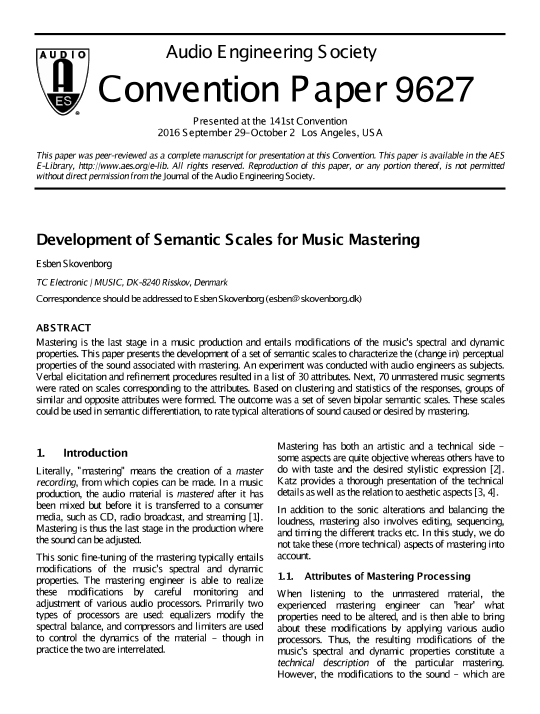Good post!
Though I think your suggestion essentially amounts to what I'd argued.
In photography, microcontrast is a real thing.
While it's a nice analogy, we don't even necessarily need the analogy. "Microdynamics" in music and music reproduction is already a real thing too. (And I'd linked to how the terms have been used in those professions, along with the analogies to music notation).
Using that as a model, perhaps micro dynamics could be defined as making more apparent small changes in the loudness of adjacent sounds without clipping the loudest parts or dropping the softest parts into the noise floor.
When you write "
making more apparent small changes" it seems to suggest an additive approach, as if microdynamics would be something one manipulates to exaggerate or not? Is that what you mean to suggest, rather than microdynamics being something one can preserve or not in the recording of an instrument?
In any case, one of the devil-in-the-details will be "
what counts as small changes in the loudness of adjacent sounds?" There's going to be a certain amount of arbitrariness in what we decide would be the cut off point for "microdynamics" or what goes in to that category, right? A lot of the pushback I got was along the lines of "why distinguish between micro and macro dynamics? Why not just say "dynamics.?" Your approach would have to answer the same questions - what count as as "small changes" and why distinguish that from just 'dynamics?' I don't anticipate it would do much better (?) and any reasonable answer will, it seems to me, recapitulate the justifications I've already given in this thread. But I'd be happy to see you draw out your distinctions. (And note that any existence of "microdynamics" in the recorded signal or playback system necessarily implies the same in real sounds, e.g. the instruments and voices being recorded, and so the same questions apply. Which is why, as I've pointed out, musicians actually do have such language to describe such differences).
The question before the house would be: is anyone linear system less capable of rendering small changes in volume than any other linear system? It’s linear or it isn’t.
Yes that's the equivalent of where my argument led to as well. Is there any reason to think certain systems are less able to render "microdynamics" faithfully or less or more realistically than another?
As a sidebar: For me, my concern about microdynamics mostly arises from what I seem to observe about the differences between live and reproduced sound. Last night I was walking along a busy urban street with tons of bars (I live around the corner). Some bars are blasting recorded music - often jazz or jazzy - some have live performances. Some are live one night, recorded music the next.
I was walking towards a bar, the front portion of which was open on to the street. I could hear a sax playing (and bass and guitar, lightly backing during the solo) and it was just unmistakably a live saxophone. I stopped before I even passed the bar, listening, and just asking myself "what IS it about the characteristics of that sound that tells me it's live, not reproduced?" And it was the usual: The sense of acoustic size and power, the timbral richness, but also definitely a sense of dynamics. It wasn't the sheer loudness - I hadn't even got close enough to the bar for the sound to be loud at all. And yet the sonic character just sounded live. There was a liveliness of dynamics between all the notes that I just don't hear from reproduced sound normally. And of course when I continued and passed the bar, it was a guy playing sax and live backing band. In fact I came home, put on a good sax recording, blasted it to live-like levels and listened from down the hall. Having just heard the real sax really put in relief that, yeah, the sound of the reproduced sax is clear and vivid in my home, and the recorded sax player is playing much like the live one I heard in terms of soft to loud, yet it just sounded clearly compressed, less life-like, in dynamics, compared to the real thing. I continually observe the same about any live instrument, acoustic guitars included.
Ultimately though, subjective impressions and anecdote as they may be,it should be a technically answerable question, whether reproduced sound is in fact reproducing the exact range of dynamics of someone playing a real instrument.
 "Normal" floorstanders vs standmounts already doesn't make any meaningful difference.
"Normal" floorstanders vs standmounts already doesn't make any meaningful difference.



